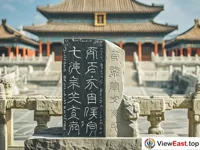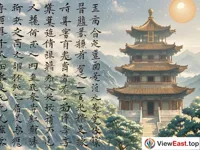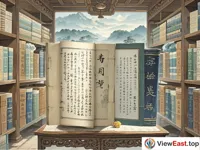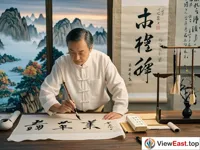







Introduction
Chinese characters, as the carriers of Chinese civilization, are not only a language and script but also a reflection of art and philosophy. Each stroke embodies deep cultural significance and historical information. The origin and development of Chinese characters are an essential part of Chinese culture and a treasure in the world's cultural heritage.
The Origin of Chinese Characters
The origin of Chinese characters can be traced back to the oracle bone script of the 14th century BC, which is the oldest known form of Chinese writing. Oracle bone script was mainly used to record divination results, and its emergence marks the official birth of Chinese writing.
Oracle Bone Script
Oracle bone script was inscribed on turtle shells or animal bones and is vividly expressive, with high artistic value. The discovery of oracle bone script provides valuable material for the study of ancient societies.
Bronze Inscriptions
With the widespread use of bronze ware, bronze inscriptions emerged. These were cast onto bronze vessels and were more standardized and mature than oracle bone script.
The Evolution of Chinese Characters
Chinese characters have undergone thousands of years of evolution, from oracle bone script to bronze inscriptions, and then to seal script, clerical script, regular script, and so on. Each transformation reflects the development of society and the evolution of culture.
Seal Script
Seal script became the standard font after the unification of writing during the Qin Dynasty. Its character shapes were more simplified and standardized, laying the foundation for the later development of Chinese characters.
Clerical Script
Clerical script appeared during the Han Dynasty, and its character shapes were more concise and fluid than seal script. It represents an important stage in the transition of Chinese characters from ancient to modern forms.
Regular Script
Regular script matured during the Tang Dynasty, with upright character shapes and clear strokes, forming the basis of modern Chinese character writing.
The Art of Chinese Characters
Chinese characters are not only a tool for conveying information but also an art form. Calligraphy is an essential expression of the art of Chinese characters.
Calligraphy Art
Chinese calligraphy has a long history, from the running script of Wang Xizhi to the regular script of Yan Zhenqing, ancient calligraphers have created countless treasures of calligraphic art.
Aesthetics of Chinese Characters
The aesthetic value of Chinese characters lies in the balance of their structure and the variation of strokes. Each character is like an exquisite picture.
The Inheritance of Chinese Culture
Chinese characters are an essential medium for the inheritance of Chinese culture. Through Chinese characters, we can understand ancient philosophical thoughts, historical stories, and cultural traditions.
Classical Literature
A wealth of classical literature, such as the "Book of Songs" and "Records of the Grand Historian," has been recorded and passed down through Chinese characters.
The Bridge of Language
Chinese characters, as a bridge of language, connect the ancient and modern eras and also connect different ethnic groups and regions.
Conclusion
The charm of Chinese characters lies in their long history, rich connotations, and unique artistic forms. Gaining an in-depth understanding of Chinese characters allows us not only to better comprehend Chinese culture but also to gain a deeper understanding of human civilization.
Exploring the origin and development of Chinese characters, we can learn how to draw wisdom from ancient scripts; studying the art of Chinese characters, we can learn how to appreciate and create beauty. Chinese characters are not only a treasure of Chinese culture but also a common wealth of all humanity.